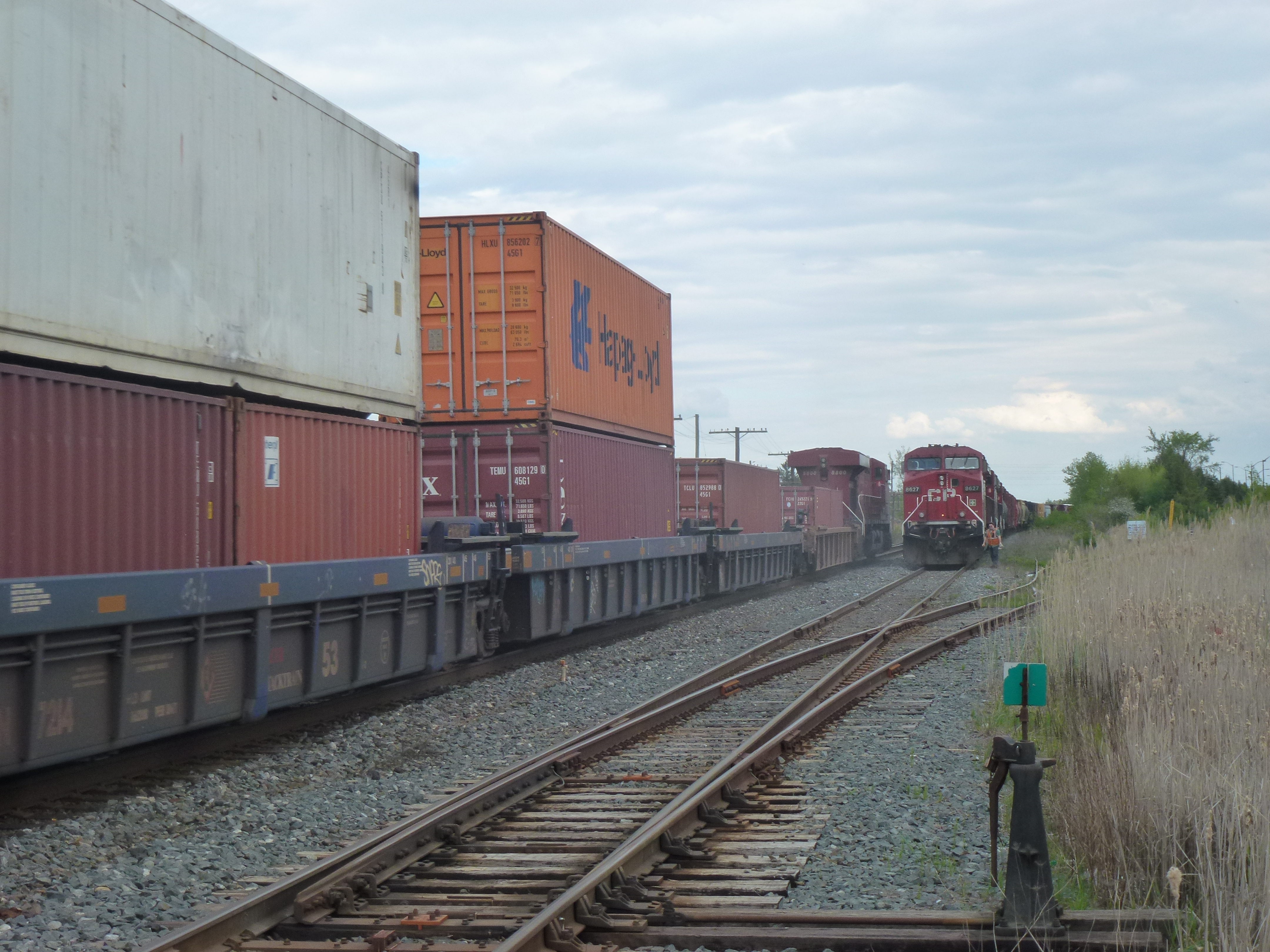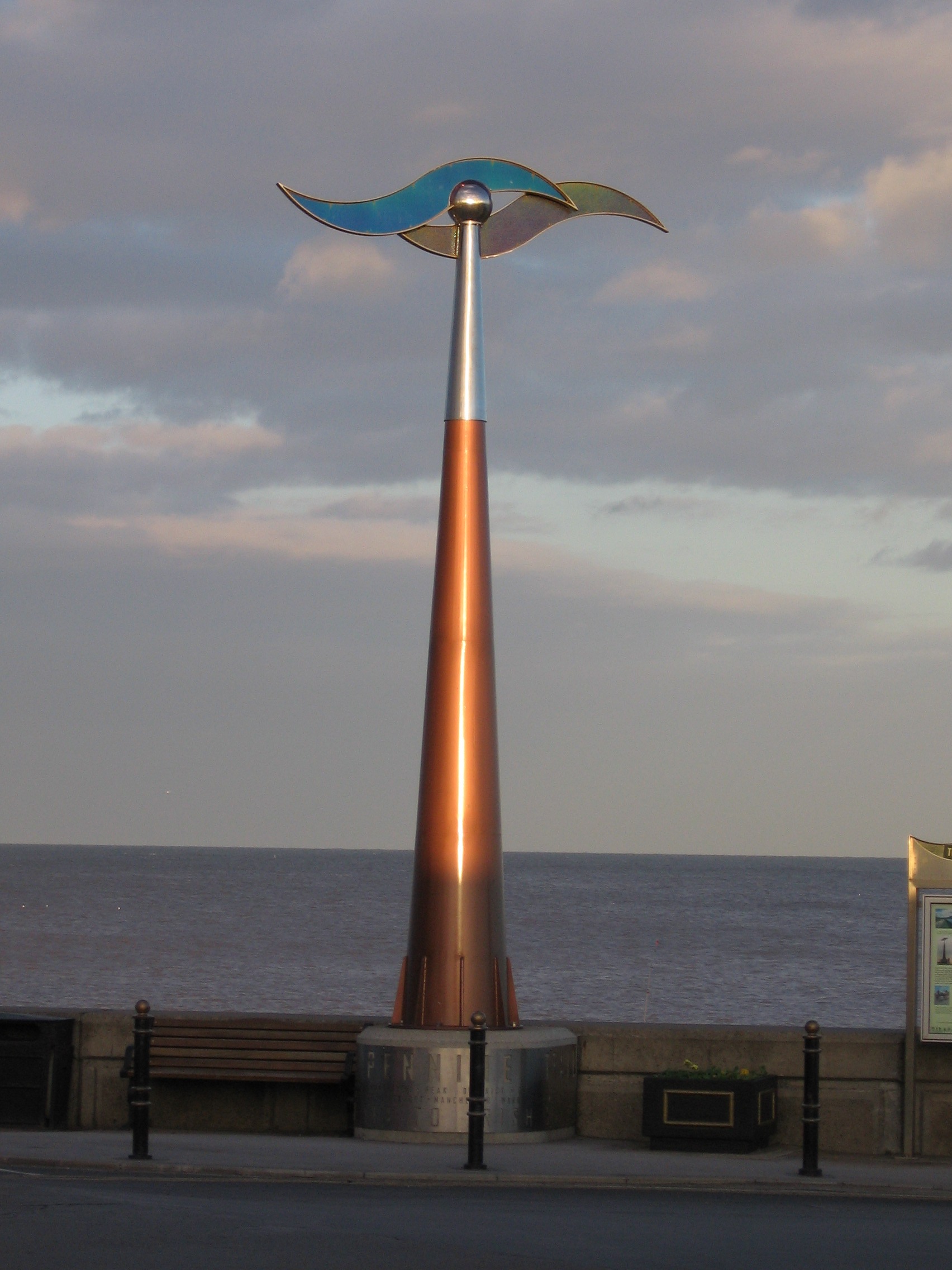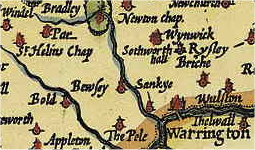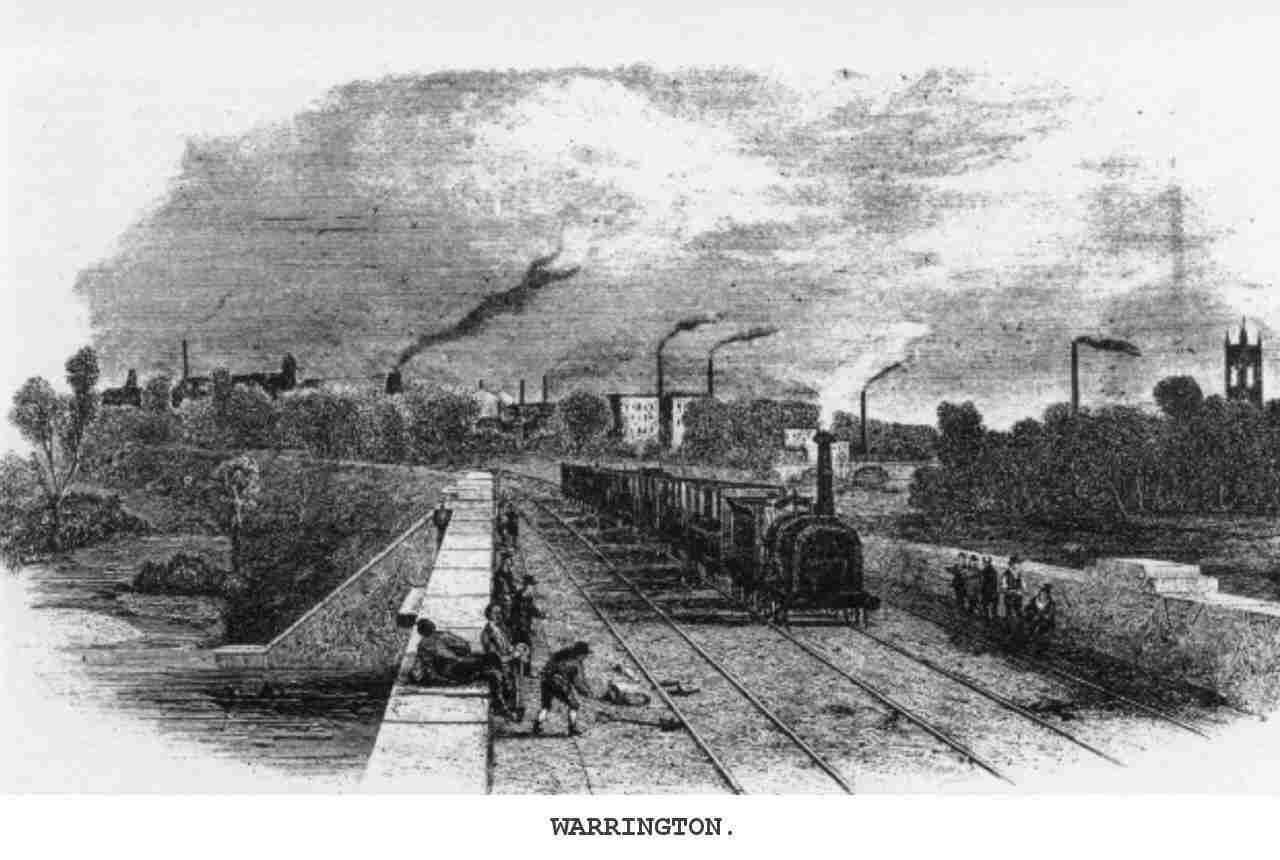|
Spike Island, Cheshire
Spike Island is a park in Widnes, Borough of Halton, Halton, North West England. It is an artificial island between the Sankey Canal and the estuary of the River Mersey containing parkland, woodland, wetlands and footpaths. It is next to the Catalyst Science Discovery Centre, an interactive science and technology museum. Spike Island was at the centre of the British chemical industry during the Industrial Revolution. In 1833, Widnes Dock, the world's first rail-to-ship dock, was built on the island. In 1848, John Hutchinson (industrialist), John Hutchinson built the first chemical factory in Widnes on the island. The chemical industry in Widnes grew rapidly thereafter. By the 1970s no working chemical factories remained, and from 1975 onwards the island was cleaned up and turned over to public recreation. A Spike Island (concert), famous concert by the Rock music, rock band the Stone Roses, subsequently the subject of Spike Island (film), an eponymous film (2012), took place on ... [...More Info...] [...Related Items...] OR: [Wikipedia] [Google] [Baidu] |
Catalyst Science Discovery Centre
The Catalyst Science Discovery Centre and Museum is a science and technology science centre, museum in Widnes, Halton, North-West England. The centre has interactive exhibits, reconstructed historical scenes, an observatory, a live-science theatre and family workshops. It is next to Spike Island, Widnes, Spike Island, a public park, located between the River Mersey and the Sankey Canal that has woodlands, wetlands, footpaths and industrial archaeological history. The centre is housed in Tower Building, constructed around 1860 by John Hutchinson (industrialist), John Hutchinson as the administrative centre for his chemical business. The centre holds a collection of archives relating to the chemical industry, these include documents, photographs and the entire research archive of the Imperial Chemical Industries, ICI General Chemical Division. History Catalyst is next to Spike Island, Widnes, Spike Island, in Widnes, Halton. The museum is housed in an old four-storey building w ... [...More Info...] [...Related Items...] OR: [Wikipedia] [Google] [Baidu] |
Spike Island (film)
''Spike Island'' is a 2012 British comedy film directed by Mat Whitecross and written by Chris Coghill. It was distributed by Universal Pictures and Vertigo Films and produced by Revolver Entertainment. The film is based on the Stone Roses' seminal gig on Spike Island in Widnes, Cheshire, England, and follows the story of a group of friends who idolise the band and try to get into the gig, but are faced with problems because they don’t have tickets or a way to get there. ''Spike Island'' premiered on 11 October 2012 at the BFI London Film Festival and was released on DVD on 21 June 2013. Plot Set in May 1990, the film follows the exploits of five lads: Gary 'Tits' Titchfield, Darren 'Dodge' Hodge, Chris 'Zippy' Weeks, 'Little Gaz' Gareth Barrett and 'Penfold' Andrew Peach. They are fans of the Stone Roses and members of wannabe band Shadowcaster. It starts 60 hours prior to the Stone Roses' legendary gig at Spike Island, Widnes, Cheshire. The group get an idea to give the ... [...More Info...] [...Related Items...] OR: [Wikipedia] [Google] [Baidu] |
Chemical Industry
The chemical industry comprises the companies and other organizations that develop and produce industrial, specialty and other chemicals. Central to the modern world economy, the chemical industry converts raw materials ( oil, natural gas, air, water, metals, and minerals) into commodity chemicals for industrial and consumer products. It includes industries for petrochemicals such as polymers for plastics and synthetic fibers; inorganic chemicals such as acids and alkalis; agricultural chemicals such as fertilizers, pesticides and herbicides; and other categories such as industrial gases, speciality chemicals and pharmaceuticals. Various professionals are involved in the chemical industry including chemical engineers, chemists and lab technicians. History Although chemicals were made and used throughout history, the birth of the heavy chemical industry (production of chemicals in large quantities for a variety of uses) coincided with the beginnings of the Industrial Revo ... [...More Info...] [...Related Items...] OR: [Wikipedia] [Google] [Baidu] |
Imperial Chemical Industries
Imperial Chemical Industries (ICI) was a British Chemical industry, chemical company. It was, for much of its history, the largest manufacturer in Britain. Its headquarters were at Millbank in London. ICI was listed on the London Stock Exchange and was a constituent of the FT 30 and later the FTSE 100 Index, FTSE 100 indices. ICI was formed in 1926 as a result of the merger of four of Britain's leading chemical companies. From the onset, it was involved in the production of various chemicals, explosives, fertilisers, insecticides, dyestuffs, non-ferrous metals, and paints; the firm soon become involved in plastics and a variety of speciality products, including food ingredients, polymers, electronic materials, fragrances and flavourings. During the Second World War, ICI's subsidiary Nobel Enterprises, ICI Nobel produced munitions for Britain's war effort; the wider company was also involved with Britain's nuclear weapons programme codenamed Tube Alloys. Throughout the 1940s and ... [...More Info...] [...Related Items...] OR: [Wikipedia] [Google] [Baidu] |
Gossage
Gossage is a family name of soapmakers and alkali manufacturers. Their company eventually became part of the Unilever group. During World War II, all soap brands were abolished by British government decree in 1942, in favour of a generic soap. When conditions returned to normal post war, the Gossage brand was not revived by Unilever though the company name is still registered for legal purposes. The online 'Times Index' shows meetings of the Gossage company board until the early 1960s. Family history William Gossage (1799–1877) was the founder of the dynasty and the youngest of 13 children. He was born in Burgh in the Marsh, near Skegness, Lincolnshire. He had his chemical training from his uncle, a druggist in Chesterfield to whom he was apprenticed at the age of 12, in 1823. He set up in business at Leamington, where he made ''Leamington Salts''. There he met a girl and was married in 1830. Their first son was Alfred Howard Gossage, born 1830. The following year he fathered ... [...More Info...] [...Related Items...] OR: [Wikipedia] [Google] [Baidu] |
Port Of Liverpool
The Port of Liverpool is the enclosed dock system that runs from Brunswick Dock in Liverpool to Seaforth Dock, Seaforth, on the east side of the River Mersey and the Birkenhead Docks between Birkenhead and Wallasey on the west side of the river. In 2023, the Port of Liverpool was the UK’s fourth busiest container port, handling around 900,000 TEUs of cargo each year, equivalent to over 30 million tonnes of freight per annum. It handles a wide variety of cargo, including containers, bulk cargoes such as coal, grain and animal feed, and roll-on/roll-off cargoes such as cars, trucks and recycled metals. The port is also home to one of the largest cruise terminals in the UK which handles approximately 200,000 passengers and over 100 cruise ships each year. The port has significant links to North America and the rest of Europe via the Irish Sea and Atlantic Ocean. It is the most significant port in the UK for transatlantic trade. The port's history spans over 800 yea ... [...More Info...] [...Related Items...] OR: [Wikipedia] [Google] [Baidu] |
British Rail
British Railways (BR), which from 1965 traded as British Rail, was a state-owned company that operated most rail transport in Great Britain from 1948 to 1997. Originally a trading brand of the Railway Executive of the British Transport Commission, it became an independent statutory corporation in January 1963, when it was formally renamed the British Railways Board. British Railways was formed on 1 January 1948 as a result of the Transport Act 1947, which nationalised the Big Four British railway companies along with some other (but not all) smaller railways. Profitability of the railways became a pressing concern during the 1950s, leading to multiple efforts to bolster performance, including some line closures. The 1955 Modernisation Plan formally directed a process of dieselisation and electrification to take place; accordingly, steam locomotives had been entirely replaced by diesel and electric traction (except for the narrow-gauge Vale of Rheidol Railway tourist lin ... [...More Info...] [...Related Items...] OR: [Wikipedia] [Google] [Baidu] |
Siding (rail)
In rail terminology, a siding is a low-speed track section distinct from a running line or through route such as a main line, branch line, or spur. It may connect to through track or to other sidings at either end. Sidings often have lighter rails, meant for lower speed or less heavy traffic, and few, if any, signals. Sidings connected at both ends to a running line are commonly known as loops; those not so connected may be referred to as single-ended or dead-end sidings, or (if short) stubs. Functions Sidings may be used for marshalling (classifying), stabling, storing, loading, and unloading rail vehicles. Common sidings store stationary rolling stock, especially for loading and unloading. Industrial sidings (also known as spurs) go to factories, mines, quarries, wharves, warehouses, some of them are essentially links to industrial railways. Such sidings can sometimes be found at stations for public use; in American usage these are referred to as team tracks (after ... [...More Info...] [...Related Items...] OR: [Wikipedia] [Google] [Baidu] |
Trans Pennine Trail
The Trans Pennine Trail is a long-distance path running from coast to coast across Northern England on a mixture of surfaced paths, with some short on-road sections, and with gentle gradients (it runs largely along disused railway lines and canal towpaths). It forms part of European walking route E8 and is part of the National Cycle Network as Route 62 (referencing the M62 motorway which also crosses the Pennines). Most of the surfaces and gradients make it a relatively easy trail, suitable for cyclists, pushchairs and wheelchair users. The section between Stockport and Barnsley is hilly, especially near Woodhead, and not all sections or barriers are accessible for users of wheelchairs or non-standard cycles. Some parts are also open to horse riding. The trail is administered from a central office in Barnsley, which is responsible for promotion and allocation of funding. However, the 27 local authorities whose areas the trail runs through are responsible for management of ... [...More Info...] [...Related Items...] OR: [Wikipedia] [Google] [Baidu] |
St Helens, Merseyside
St Helens () is a town in Merseyside, England, with a population of 117,308. It is the administrative centre of the Metropolitan Borough of St Helens which had a population of 183,200 at the United Kingdom Census 2021, 2021 Census. The town is north of the River Mersey, in the south-west part of Historic counties of England, historic Lancashire. The town was initially a small settlement within the historic county's ancient hundred (county division), ''hundred'' of West Derby (hundred), West Derby in the Township (England), township of Windle, St Helens, Windle but by the mid-1700s the town had developed into a larger urban area beyond the townships borders. By 1838 the council was formally made responsible for the administration of Windle and the three other townships of Eccleston, St Helens, Eccleston, Parr, St Helens, Parr and Sutton, St Helens, Sutton that were to form the town's traditional shape. In 1868 the town was incorporated as a municipal borough, then later became ... [...More Info...] [...Related Items...] OR: [Wikipedia] [Google] [Baidu] |
Warrington
Warrington () is an industrial town in the Borough of Warrington, borough of the same name in Cheshire, England. The town sits on the banks of the River Mersey and was Historic counties of England, historically part of Lancashire. It is east of Liverpool and the same distance west of Manchester. The population in 2021 was recorded as 174,970 for the built-up area and 210,900 for the wider borough, the latter being more than double that of 1968 when it became a New towns in the United Kingdom, new town. Warrington is the largest town in the ceremonial county of Cheshire. Warrington was founded by the Roman Britain, Romans at an important crossing place on the River Mersey. A new settlement was established by the Saxons, Saxon Wærings. By the Middle Ages, Warrington had emerged as a market town at the lowest bridging point of the river. A local tradition of textile and tool production dates from this time. The expansion and urbanisation of Warrington coincided with the Industr ... [...More Info...] [...Related Items...] OR: [Wikipedia] [Google] [Baidu] |








